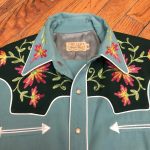Have you ever wondered, what is a halter top? This popular upper-body garment has become a go-to choice for fashion lovers around the world. A halter top is defined by its unique strap design that wraps around the neck while leaving the shoulders and back mostly exposed. Because of this structure, it offers both support and a flattering silhouette. Moreover, it’s especially favored during warm seasons due to its breathability and comfort. As a result, many women choose halter tops for beach outings, parties, or casual daytime wear. In addition, the style pairs well with high-waisted skirts, jeans, or swimwear. Consequently, it remains a staple in modern wardrobes. Furthermore, designers continue to innovate the classic look with lace, ruffles, cutouts, and adjustable ties. Therefore, whether you’re shopping for a boho-chic piece or a sleek evening option, understanding what is a halter top can help you make smarter fashion choices.
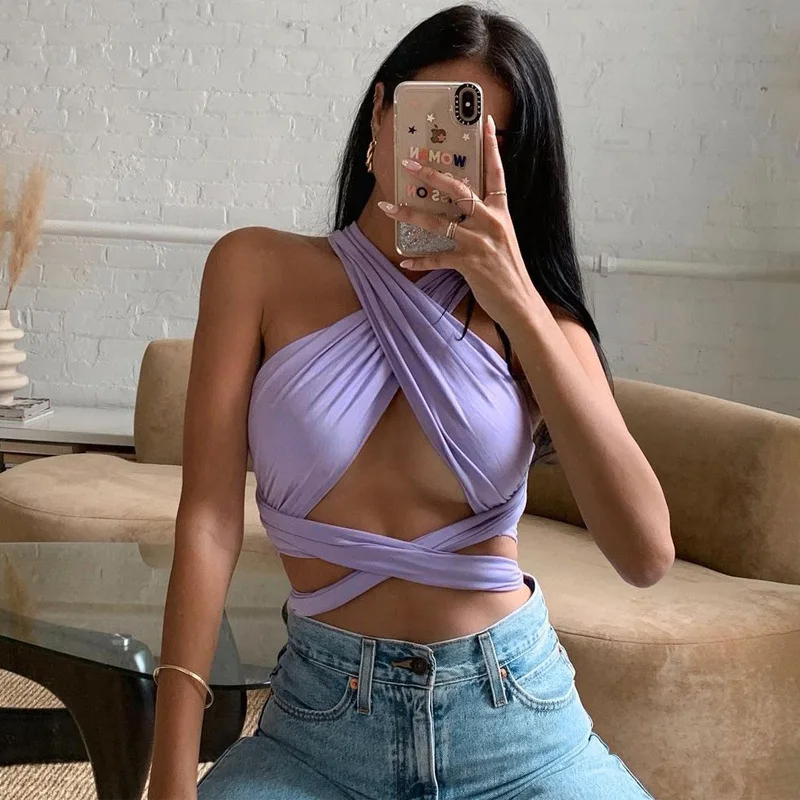 The Origins and Evolution
The Origins and Evolution
The history of the halter top dates back several decades. Initially inspired by ancient Greek and Roman attire, early versions featured draped fabrics tied at the neck. Later, in the 1940s, Hollywood actresses began wearing similar styles on screen. As a result, the trend gained mainstream attention. Then, during the 1970s, the halter top became a symbol of freedom and self-expression. Festival-goers and dancers embraced the look for its ease of movement and bold aesthetic. Subsequently, the 1980s introduced more structured versions made from spandex and metallic fabrics. These were often worn during aerobics classes or nightclubs.
Over time, fashion designers refined the cut and materials. Today, the halter top blends retro charm with modern functionality. Meanwhile, cultural shifts have helped normalize body positivity, making the halter top more inclusive. Therefore, its evolution reflects broader changes in society and style. Clearly, what is a halter top cannot be understood without acknowledging its rich past.
How a Halter Top Differs from Other Tops
A halter top stands apart from other sleeveless garments due to its distinctive neckline. Unlike tank tops, which rely on shoulder straps, halter styles transfer weight to the neck. This shift in support creates a different balance across the torso. Also, because the back is typically open, tops offer greater ventilation. In contrast, camisoles usually have thin straps and full back coverage. Similarly, tube tops encircle the upper body but lack neck support. Hence, they may slip more easily.
However, halter tops remain secure through strategic knotting or fastening. Additionally, their design accentuates the collarbones and shoulders. Thus, they are ideal for highlighting these features. On the other hand, some people find halter styles less suitable for heavy busts. Yet, many brands now include removable padding or underwire for added structure. Overall, knowing how a top differs helps consumers select the right fit. For instance, those seeking backless elegance will likely prefer this style over others.
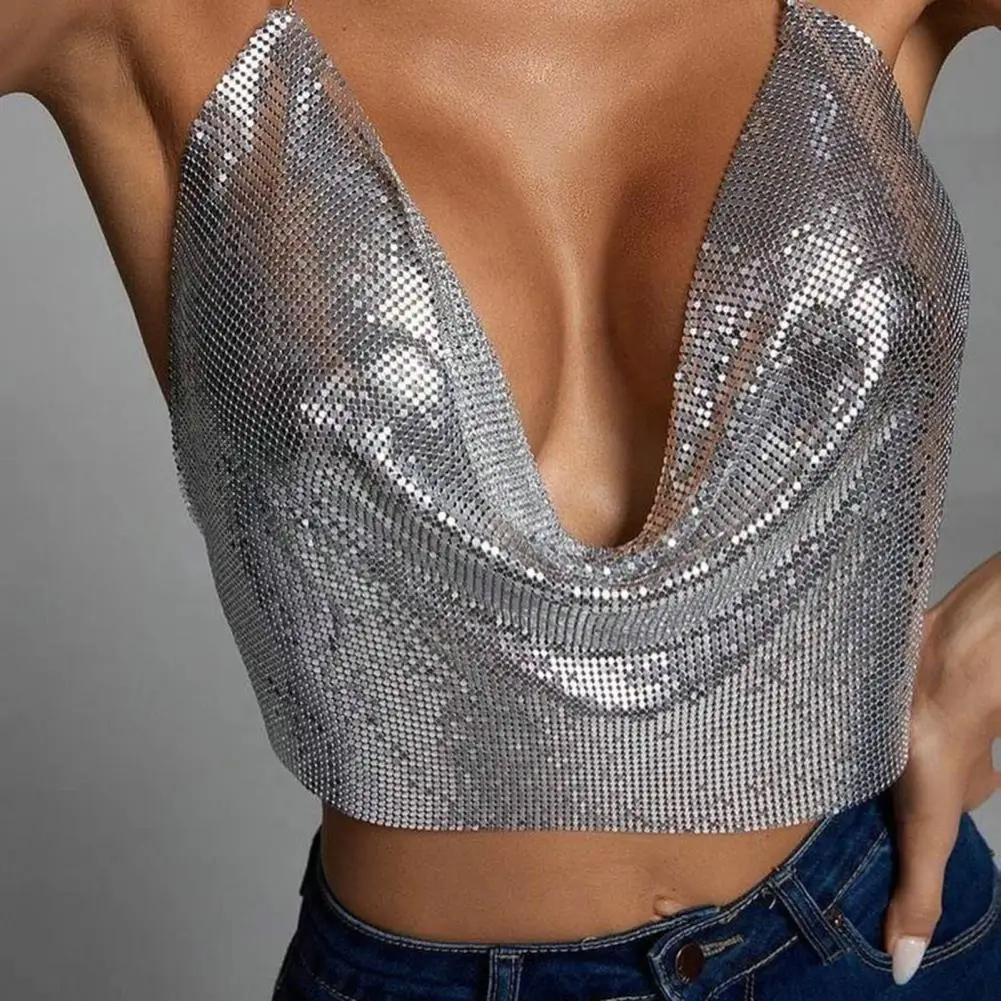 Popular Materials Used
Popular Materials Used
When selecting a top, fabric plays a crucial role in comfort and appearance. Cotton is one of the most common materials due to its softness and breathability. As a result, cotton halter tops are perfect for daily wear or outdoor events. Similarly, linen blends provide lightweight texture and natural cooling properties. These are excellent choices for summer vacations or tropical climates. On the other hand, polyester and nylon offer durability and stretch. They also resist wrinkles, making them travel-friendly.
Furthermore, these synthetic fabrics often come in shiny or metallic finishes. Consequently, they’re popular for party or stage wear. Silk and satin halter tops deliver luxury and drape beautifully. Although more delicate, they shine in formal settings. Meanwhile, mesh and lace variations add a touch of sensuality. These are frequently used in festival fashion or intimate outfits. Ultimately, material choice affects both function and style. Therefore, buyers should consider occasion, climate, and care needs before purchasing.
Why Halter Tops Are Ideal for Warm Weather
Halter tops excel in hot environments for several reasons. First, their minimal coverage allows air to circulate freely. This reduces sweat buildup and keeps the body cooler. Second, the open-back design enhances airflow along the spine. As a result, wearers feel lighter and more comfortable. Also, most tops use lightweight fabrics suited for heat. These materials wick moisture and dry quickly. Therefore, they perform well at beaches or pools. Moreover, the neck strap prevents slipping during movement.
This makes halter tops practical for dancing or walking. In addition, many come with built-in UV protection. Some even feature SPF-infused fibers to guard against sun damage. Besides physical benefits, halter tops support confident self-expression. People often feel more relaxed when dressed appropriately for the weather. Thus, choosing breathable, stylish options like halter tops improves overall experience. For all these reasons, they dominate seasonal fashion trends every year.
How to Style a Halter Top for Different Occasions
Styling a halter top depends heavily on context and personal taste. For casual outings, pair a basic cotton halter with denim shorts or wide-leg pants. Add sandals and sunglasses for a laid-back vibe. Alternatively, tuck it into a flowy midi skirt for brunch dates. Transitioning to evening wear requires bolder choices. Consider a sequined or velvet halter top with tailored trousers. Complete the look with heels and statement earrings. Meanwhile, beachgoers can layer a sheer halter over a bikini.
This provides modesty while maintaining a swim-ready aesthetic. For festivals, opt for crochet or tie-dye versions with fringe details. Combine them with cargo pants or cutoffs for an edgy flair. Office-appropriate styling is trickier but possible. Choose structured halter tops in neutral tones and wear under blazers. Pair with pencil skirts or culottes for semi-formal settings. Above all, confidence determines how well any outfit works. Hence, experiment until you find combinations that suit your lifestyle.
Choosing the Right Fit: Bust Support and Neck Comfort
Finding the correct fit is essential when wearing a top. Since the neck strap bears much of the weight, improper sizing can cause discomfort. For example, a too-tight band may restrict movement or irritate the skin. Conversely, a loose fit might lead to slippage or inadequate support. Therefore, adjustable ties are highly recommended. They allow customization based on individual anatomy. Additionally, cup size influences stability. Women with larger busts should seek styles with internal bras or padding.
Built-in boning or side support panels also help distribute pressure evenly. Meanwhile, smaller-busted individuals enjoy more flexibility in design choices. Straps should lie flat without digging into the neck. Furthermore, check seam placement to avoid chafing. Try moving your arms and bending forward to test mobility. Always try halter tops on before buying, if possible. Ultimately, comfort enhances both appearance and confidence.
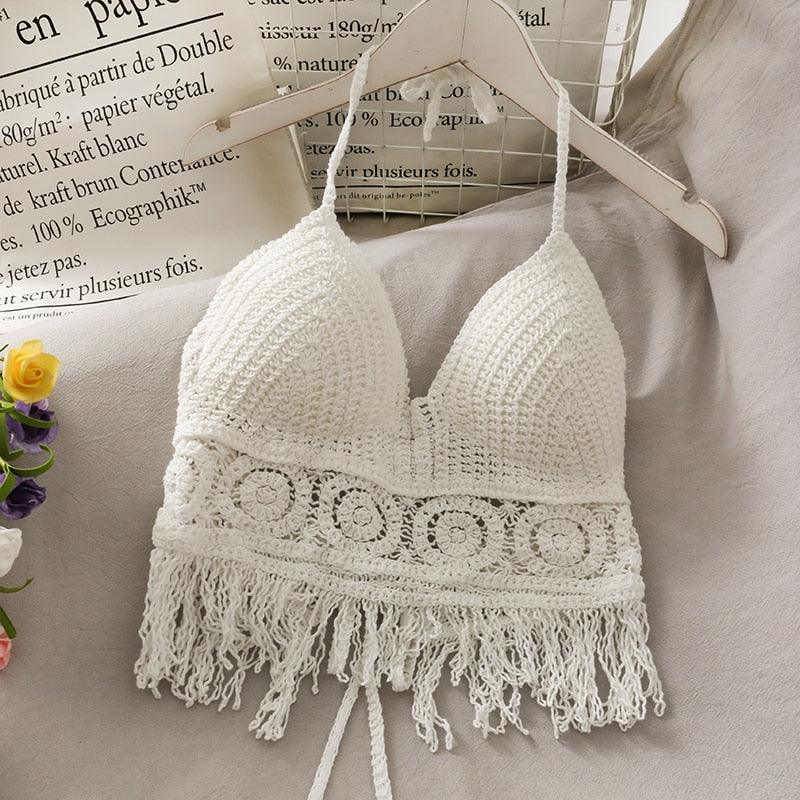 The Role in Swimwear and Activewear
The Role in Swimwear and Activewear
Halter designs are deeply integrated into swimwear and athletic clothing. In swimsuits, halter necklines provide superior lift and security. This is particularly important during water activities. Whether swimming, surfing, or lounging, the tied-back structure stays in place. Moreover, halter bikinis highlight toned shoulders and backs. They also work well with sarongs or cover-ups. Similarly, one-piece swimwear uses halter cuts for dramatic silhouettes. Designers often combine plunging fronts with high-cut legs for maximum impact.
Beyond swimwear, activewear brands incorporate halter elements. Yoga tanks and dance leotards benefit from the secure fit. Athletes appreciate reduced shoulder strain compared to traditional straps. Also, the open back aids temperature regulation during intense workouts. As a result, performance tops are rising in popularity. Their dual function—supportive and stylish—makes them versatile. Clearly, what is a halter top extends beyond fashion into functional apparel.
Common Misconceptions
Despite their widespread appeal, tops face several misconceptions. One common belief is that they only suit slim figures. However, diverse cuts now cater to various body types. Plus-size ranges include supportive seams and wider straps. Another myth suggests halter tops lack professionalism. Yet, when styled correctly, they can appear polished. For instance, a silk halter paired with a blazer reads as sophisticated. Some assume they’re difficult to wear. But modern versions often feature clasps instead of knots.
This simplifies dressing and improves reliability. Others think tops expose too much skin. Still, layered looks or longer hemlines address modesty concerns. Additionally, people believe they aren’t suitable for colder months. Layering with jackets or cardigans solves this issue. Finally, not all tops are revealing; some offer full front coverage. Dispelling these myths encourages broader acceptance. After all, inclusivity strengthens fashion’s reach.
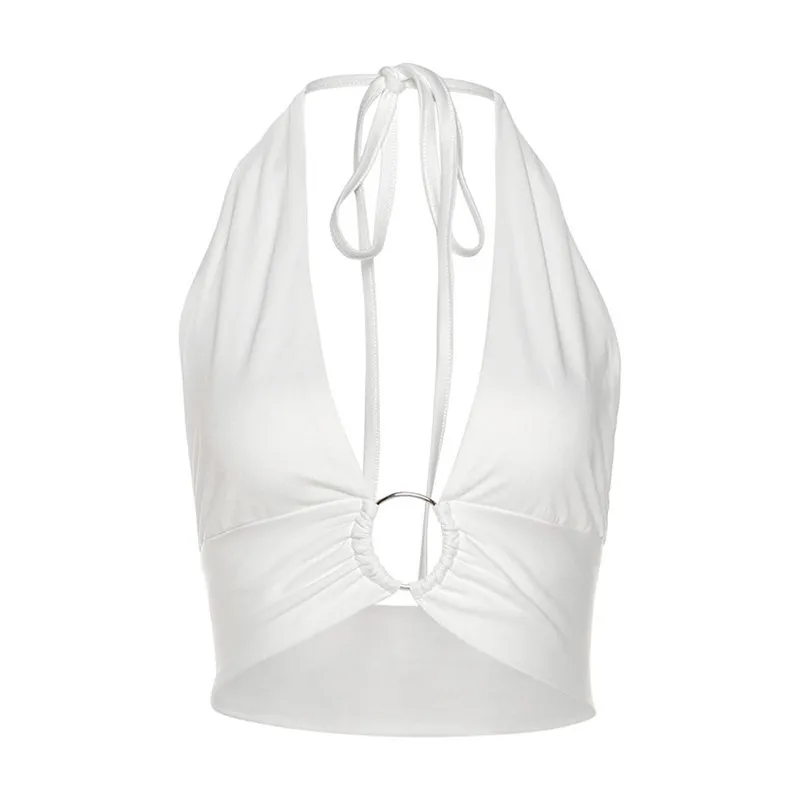 Frequently Asked Questions
Frequently Asked Questions
Q: What is a halter top used for?
A halter top serves both fashion and function. It’s commonly worn for休闲, beach trips, parties, or as part of swimwear. Its design supports movement while showing off the shoulders.
Q: Can I wear a halter top to work?
Yes, depending on your workplace. Pair a conservative halter with a jacket and high-waisted pants for office suitability.
Q: Do halter tops suit all body types?
Absolutely. With adjustable straps and varied cuts, there’s a halter top for every figure.
Q: How do I prevent my halter top from slipping?
Ensure proper fit and use anti-slip grips or double-sided tape if needed.
Q: Are halter tops appropriate for weddings?
They can be, especially for beach or garden ceremonies. Choose elegant fabrics like chiffon or satin.
Q: Can men wear halter tops?
While rare, unisex designs exist. Men may wear them for performances or artistic expression.
Q: How should I wash a halter top?
Follow label instructions. Delicate fabrics require hand washing; cotton ones can usually machine wash gently.
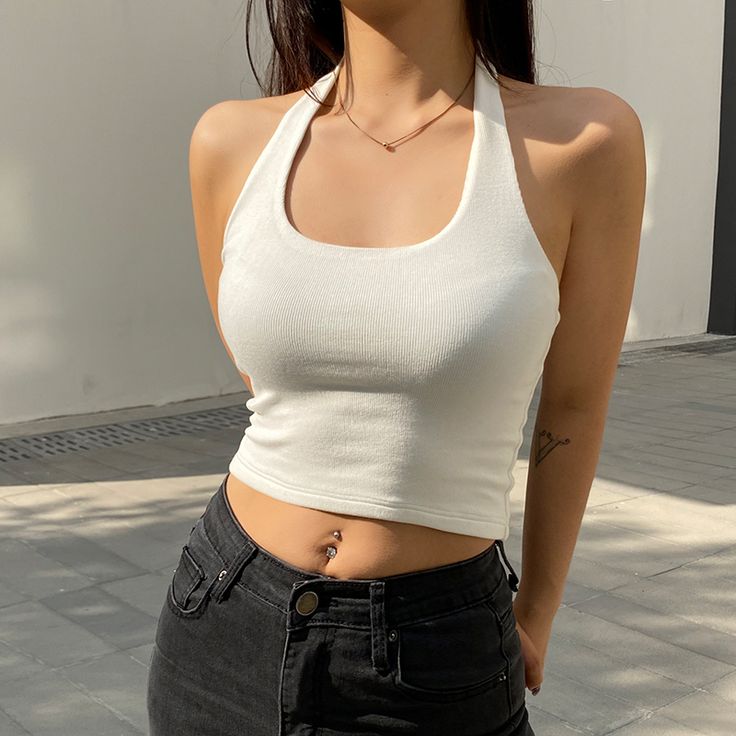 Final Thoughts
Final Thoughts
Understanding what is a halter top reveals more than just a clothing item—it reflects evolving tastes, comfort priorities, and cultural values. From vintage roots to contemporary runways, this garment continues to adapt. Not only does it offer aesthetic appeal, but it also promotes freedom of movement and confidence. Whether you’re dressing for sun-soaked days or vibrant nights, tops deliver versatility.
In addition, advancements in fabric and tailoring have expanded accessibility. As fashion becomes more inclusive, halter tops remain relevant across ages and lifestyles. Therefore, embracing this style means joining a long-standing tradition of bold self-presentation. And remember, what is a halter top today may inspire tomorrow’s trends. Explore options, try new pairings, and discover how this timeless piece fits your life.
